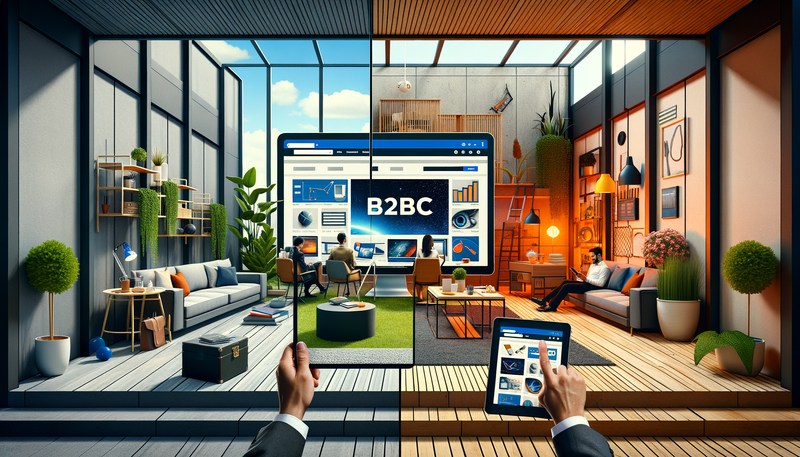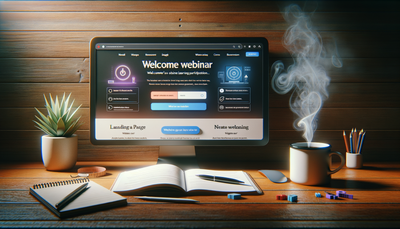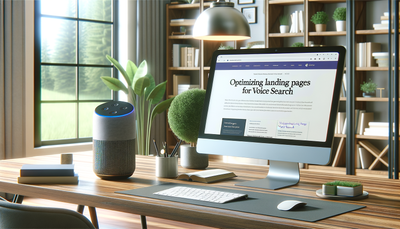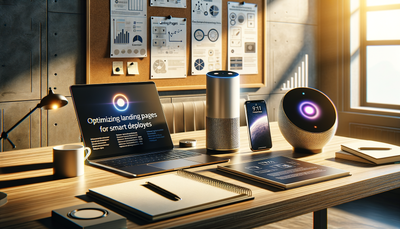Designing Effective Landing Pages for B2B vs B2C Audiences
Creating effective landing pages is crucial for both B2B and B2C businesses, but the strategies for each audience differ significantly. This article explores the key differences in designing landing pages for business-to-business versus business-to-consumer audiences. We'll delve into the unique characteristics of each market, their decision-making processes, and the specific elements that resonate with each group. By understanding these distinctions, marketers can tailor their landing pages to maximize conversions and achieve their goals. Whether you're targeting corporate decision-makers or individual consumers, this guide will provide valuable insights to help you craft compelling landing pages that speak directly to your intended audience.Table of Contents:
-
Understanding B2B vs B2C Audiences
- Key Elements of B2B Landing Pages
- Effective Strategies for B2C Landing Pages
- Tailoring Content and Tone
- Optimizing for Different Decision-Making Processes
- Leveraging Social Proof and Credibility
- Call-to-Action (CTA) Strategies
- Design and User Experience Considerations
- Key Elements of B2B Landing Pages
- Effective Strategies for B2C Landing Pages
- Tailoring Content and Tone
- Optimizing for Different Decision-Making Processes
- Leveraging Social Proof and Credibility
- Call-to-Action (CTA) Strategies
- Design and User Experience Considerations

Understanding B2B vs B2C Audiences
Before diving into specific strategies, it's essential to understand the fundamental differences between B2B and B2C audiences. B2B customers are typically businesses or organizations making purchases for professional use. Their decision-making process is often longer, involves multiple stakeholders, and focuses on ROI and long-term benefits. B2C customers, on the other hand, are individual consumers making personal purchases. They tend to make quicker decisions based on emotions, personal preferences, and immediate benefits.These distinctions significantly impact how landing pages should be designed and what information they should prioritize. B2B landing pages need to provide comprehensive information and address complex needs, while B2C pages should focus on creating emotional connections and highlighting immediate value.
Do you need a website? Want to build a website but don't know where to start? Our website builder is the perfect solution. Easy to use, and with the ability to customize to fit your business needs, you can have a professional website in no time.
Key Elements of B2B Landing Pages
When designing landing pages for B2B audiences, focus on the following key elements:1. Detailed Product Information: Provide in-depth specifications, features, and benefits to address the complex needs of businesses.
2. Case Studies and Testimonials: Showcase success stories from reputable companies to build credibility.
3. ROI Calculators: Offer tools that demonstrate the long-term value and cost savings of your product or service.
4. White Papers and Resources: Provide valuable industry insights and educational content to position your company as a thought leader.
5. Clear Call-to-Action (CTA): Use CTAs that align with the B2B buying process, such as 'Request a Demo' or 'Schedule a Consultation'.
6. Professional Design: Maintain a sleek, corporate aesthetic that reflects the seriousness of B2B transactions.
Effective Strategies for B2C Landing Pages
B2C landing pages require a different approach to capture the attention of individual consumers:1. Emotional Appeal: Use compelling visuals and copy that evoke emotions and connect with personal desires.
2. Simple and Concise Messaging: Keep information clear and easy to digest, focusing on key benefits.
3. Social Proof: Incorporate customer reviews, ratings, and user-generated content to build trust.
4. Urgency and Scarcity: Create a sense of FOMO (Fear of Missing Out) with limited-time offers or exclusive deals.
5. Mobile Optimization: Ensure the page is fully responsive and optimized for mobile users.
6. Engaging Visuals: Use high-quality images or videos that showcase the product in action or highlight lifestyle benefits.
7. Quick Purchase Process: Streamline the buying journey with minimal steps and clear CTAs like 'Buy Now' or 'Add to Cart'.
Building a website with SITE123 is easy
Tailoring Content and Tone
The content and tone of your landing page should align with your target audience's expectations and preferences. For B2B landing pages, adopt a professional and authoritative tone. Use industry-specific language and focus on logical arguments that appeal to business decision-makers. Provide detailed information about product specifications, integration capabilities, and support options.In contrast, B2C landing pages should use a more conversational and relatable tone. Emphasize the personal benefits and emotional satisfaction that come with the product or service. Use simple language that resonates with the average consumer and highlights how the offering can improve their daily life or solve a common problem. Incorporate storytelling elements to create a connection with the audience and make the product more memorable.
Optimizing for Different Decision-Making Processes
Understanding the decision-making process of your target audience is crucial for designing effective landing pages. B2B customers often have a longer, more complex decision-making process involving multiple stakeholders. To cater to this, B2B landing pages should provide comprehensive information that addresses the concerns of various decision-makers within an organization. Include sections that speak to technical requirements, financial considerations, and implementation processes.B2C audiences, however, tend to make quicker, more emotionally driven decisions. B2C landing pages should focus on creating an immediate connection and providing enough information to facilitate a quick purchase decision. Highlight key features, benefits, and unique selling points prominently. Use persuasive elements like limited-time offers or exclusive deals to encourage immediate action.
Leveraging Social Proof and Credibility
Both B2B and B2C landing pages benefit from social proof, but the types of social proof that resonate differ. For B2B pages, focus on case studies, client testimonials from reputable companies, industry awards, and partnerships with known brands. These elements build credibility and demonstrate your ability to handle complex business needs.B2C landing pages should leverage customer reviews, ratings, and user-generated content. Showcase real people using and enjoying your product to create relatability. Highlight any media mentions or endorsements from influencers that your target audience trusts. For both B2B and B2C, ensure that the social proof elements are prominently displayed and easily digestible, as they play a crucial role in building trust and influencing decisions.
Call-to-Action (CTA) Strategies
The call-to-action is a critical element of any landing page, but the approach varies between B2B and B2C audiences. For B2B landing pages, CTAs should align with the typical B2B sales funnel. Use action phrases like 'Request a Demo', 'Download Whitepaper', or 'Schedule a Consultation'. These CTAs acknowledge the longer decision-making process and focus on providing value and information.B2C landing pages should feature CTAs that encourage immediate action. Use phrases like 'Buy Now', 'Add to Cart', or 'Get Started'. Make these CTAs prominent, using contrasting colors and compelling copy to create urgency. For both B2B and B2C, ensure that the CTA stands out visually and is placed strategically throughout the page, especially above the fold and at natural decision points in the user's journey.
Design and User Experience Considerations
The design and user experience of your landing page should cater to the preferences and expectations of your target audience. B2B landing pages typically benefit from a clean, professional design that conveys trust and authority. Use a color scheme and imagery that aligns with corporate sensibilities. Organize information in a logical, easy-to-navigate structure that allows visitors to quickly find the details they need.B2C landing pages have more flexibility in design and can be more creative or playful, depending on the brand and product. Use eye-catching visuals and interactive elements to engage visitors emotionally. Ensure the page is visually appealing and easy to scan, with key information and benefits highlighted. For both B2B and B2C, prioritize fast loading times, mobile responsiveness, and intuitive navigation to provide a smooth user experience that keeps visitors engaged and moving towards conversion.





